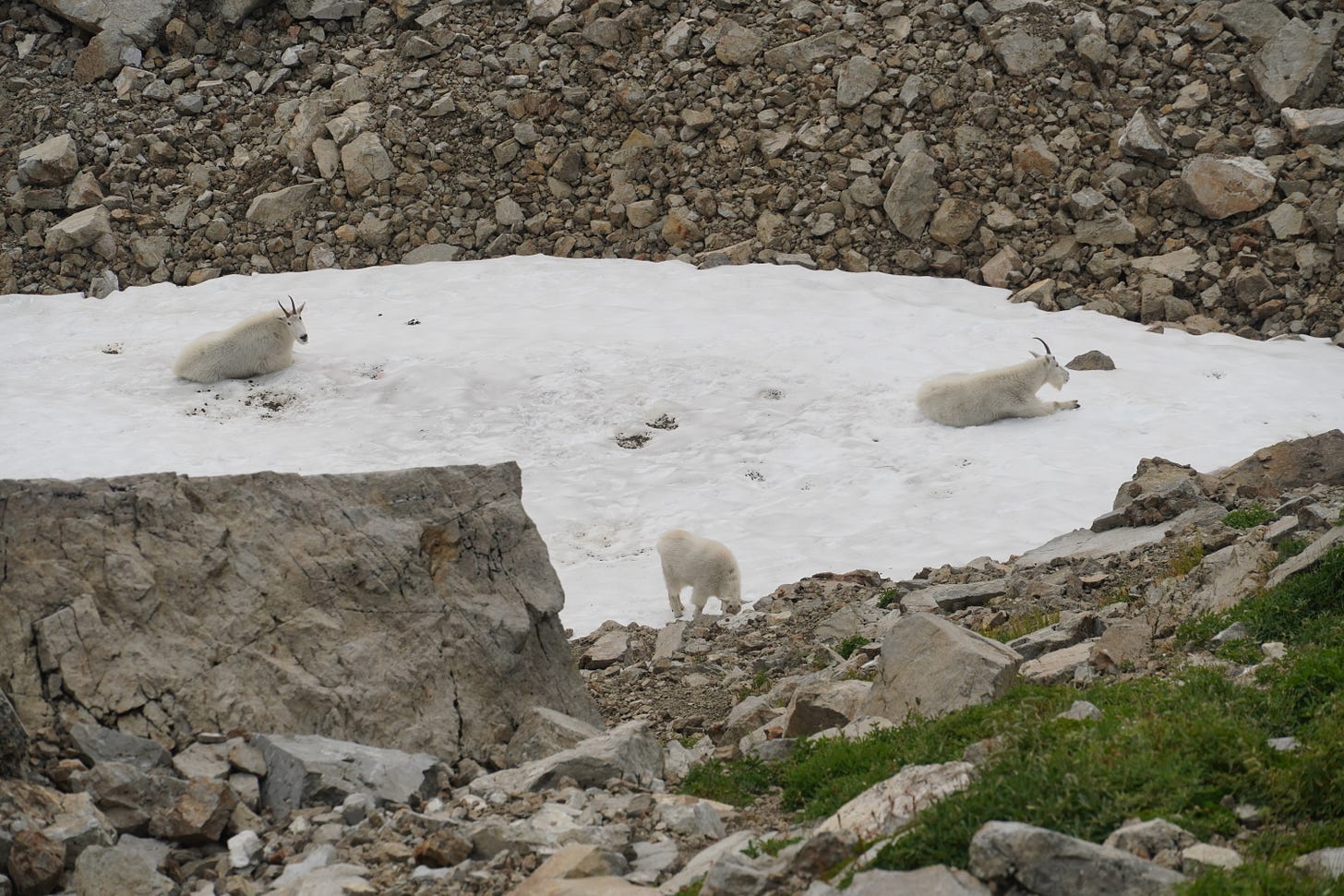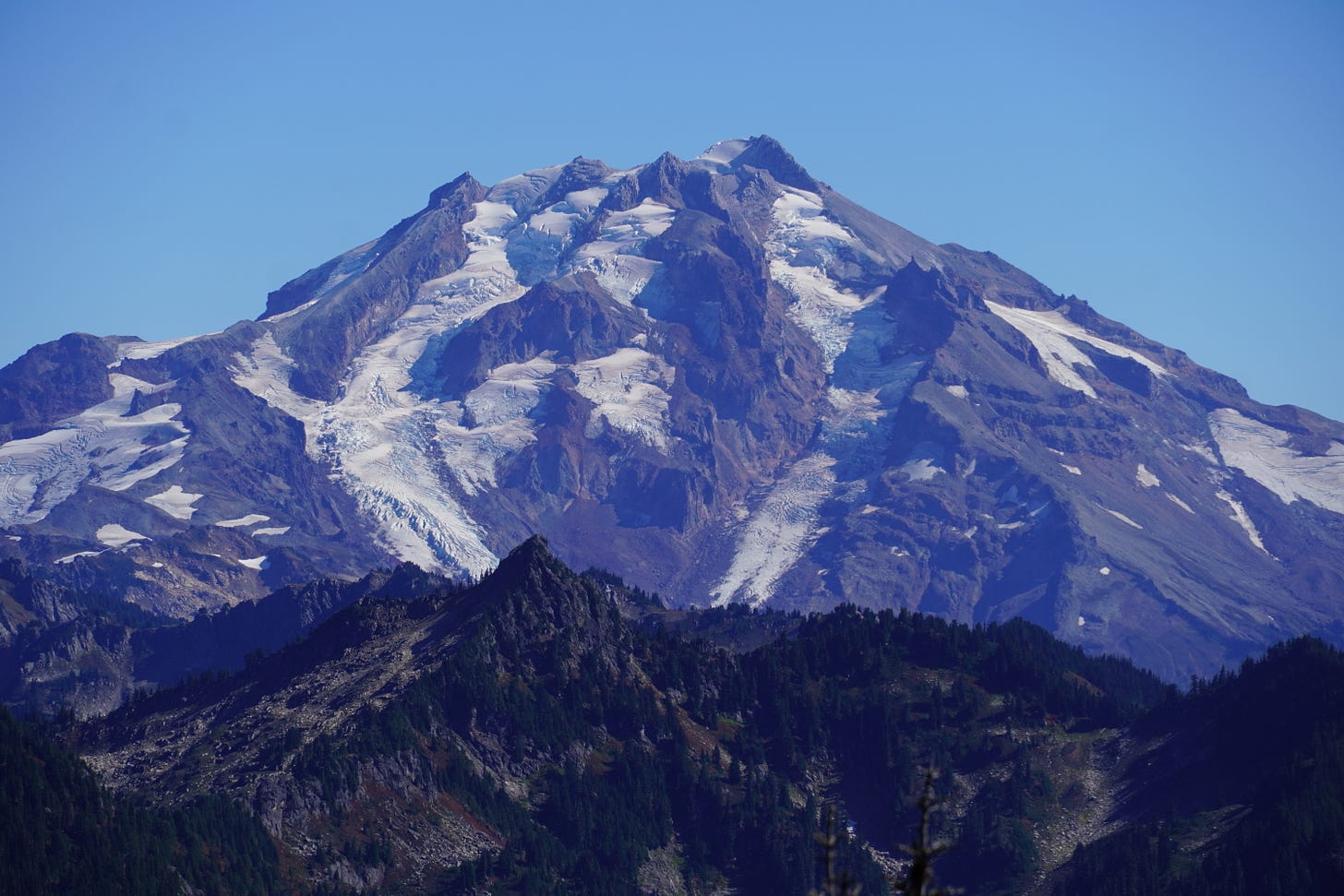On a long hike up Three Fingers Mountain, not far from Dakobed, we stopped for lunch just off the trail in a big meadow known as Goat Flat. I noticed a few climbers bounding down the trail laden with ropes, ice axes, clanging metal widgets, and other odd paraphernalia that dangled from their packs and belts. I presumed they had climbed to the tops of the jagged peaks above, but could not quite imagine how they had gotten themselves up there and back unscathed. At Goat Flat, I wanted to know, but was too timid to ask.
The following winter, I spotted an article in the Everett Herald newspaper announcing a slide presentation for anyone interested in learning about mountaineering, sponsored by a local club, the Everett Mountaineers. My girlfriend and I attended, along with dozens of other climber-wannabes. We salivated at the stories and images shared by club leaders. Giddy as hell, we signed ourselves up.
Like everyone else there, we promptly went out shopping for ice axes, crampons, and climbing harnesses. I could barely afford the stuff and had to resort to second-hand Army surplus for the rest, although I did find a deal on some used mountain boots at the old REI store in Seattle. I already had a beat-up frame pack that would have to do. But I was with the cool crowd now in my burly, broken-in boots, baggy sweater, and heavy wool pants.
Many weeks of classroom sessions followed, as well as several months of weekend field trips into the Cascades, where we would learn to take compass bearings and tie bowlines and figure-eight knots; belay and rappel with ropes, slings, and carabiners; use crampons, ice axes, prusiks, and pulleys; and apply our new knowledge to manage and minimize the hazards of mountain climbing.
I enjoyed myself immensely. We kicked steps in the spring snow, scrambled on steep rock, and learned about objective hazards—sneaky things like falling rock, avalanches, lightning strikes, hidden crevasses, and teetering cornices of snow that curl over a ridge crest like sculpted white waves, threatening to spontaneously release and crash down on anyone below who may have stopped for a sandwich.
Being out there—and up there—was unlike anything I’d experienced. The sense of clawing and climbing my way up a precipitous mountainside, then looking down into the gaping void below was and remains a great thrill. Every difficulty negotiated offered a sense of accomplishment, and some pretty good views to boot. At the summit, I’d smugly consume my cheese and bagel, afloat in sea of ragged, beckoning peaks.
That mind-altering day hike up the Railroad Grade also had me wondering about climbing even higher, and ultimately, standing on the summit of Koma Kulshan.
Near the end of our mountaineering course, an important two-day field trip was still ahead of us: glacier practice. We were going to learn how not to fall into a crevasse, and how to extract someone if they did. The practice would be held on Mount Baker’s Coleman Glacier on the northwest flank. The instructors announced that if the weather and climbing conditions were good, they would lead us to the top on the second day. The forecast was perfect. I was ecstatic.
Subscriber? Click ‘Next’ to continue . . .



